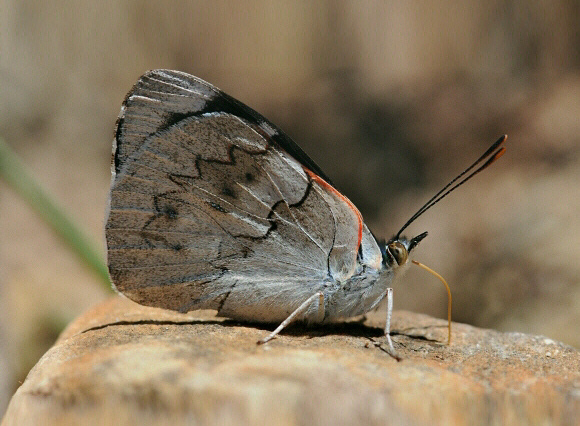 Perisama lanice picteti, Huanuco, Peru – Peter Maddison
Perisama lanice picteti, Huanuco, Peru – Peter Maddison
Introduction
The Biblidinae are recognised by their diverse but simple and colourful patterns. In the neotropics their representatives include the Callicorina – a subtribe of small-medium sized butterflies, marked on the uppersides with bands of metallic blue or green. The Callicorina includes the genus Diaethria, instantly recognised by the 88 or 89 markings on the undersides, and Perisama, which are similar on the uppersides, but have plain undersides marked only with dots and wavy lines.
The genus Perisama comprises 32 known species. They are medium-sized butterflies with blackish uppersides, marked with diagonal bands of turquoise or green on the forewings. Many species also have a band of the same colour around the hindwing margins. Perisama species are found mostly in the Andean cloudforests at altitudes between 1200-2400m, but there is also a species endemic to Costa Rica, and another endemic to Mexico.
Perisama lanice is found in Ecuador and Peru. Subspecies picteti and latimargo are endemic to Peru.
Habitats
This species is found on the eastern slope of the Andes, at altitudes between about 1000-2200m.
Lifecycle
To be completed.
with dots and wavy lines
Adult behaviour
Like other Perisama species, the butterflies spend the early mornings and late afternoons settled high in the trees, but become very active in mid-morning, dashing back and forth between the tree tops and the surface of the ground.
This species is usually seen singly, sometimes in the company of other Perisama species, visiting damp ground close to human habitations. The butterfly is extremely active in hot sunshine, flitting rapidly back and forth just above the surface of the ground, stopping momentarily here and there on rocks, boulders and patches of damp soil.
